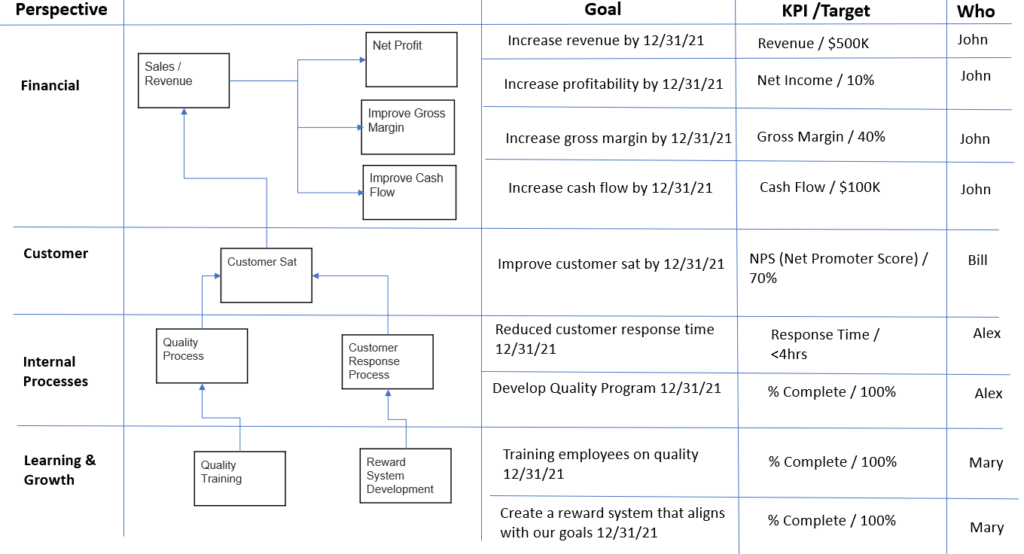In the last several posts we’ve been talking about how a business strategy is a group of decisions which are linked together to drive the top three reasons why a business exists:
- To generate a profit
- To generate cash
- To accomplish your mission
In the last post, we showed how selecting specific business processes can drive customer satisfaction which in turn drives financial performance.
What happens if you realize that you do not have the organizational capacity to execute the processes which drive customer satisfaction?
This is the last “perspective” you need to consider as part of your strategy – the “learning and growth” perspective.
This perspective is often broken down into three categories:
- Human Capital -talent, skills, and knowledge which are needed to help the organization win in the marketplace
- Informational Capital – technological infrastructure and capabilities
- Organizational Capital – having the right culture

In our example, we added two goals to the learning & growth perspective. One focused on training employees on quality (human capital) and a second focusing on developing a company-wide reward system (organizational capital) that is aligned with the overall strategy.
These two strategic moves are meant to drive two specific processes that we believe will drive customer satisfaction. Greater customer satisfaction will drive financial performance. This is our hypothesis which we can implement and see if works.
Armed with this strategy map, company leadership can communicate this strategy to employees. Everyone will know the key areas of focus, how results will be measured, and who is responsible for each area.
In the next blog post, we’ll talk about how to keep your strategy on track.
Need help with defining and communicating your strategy? Contact us.